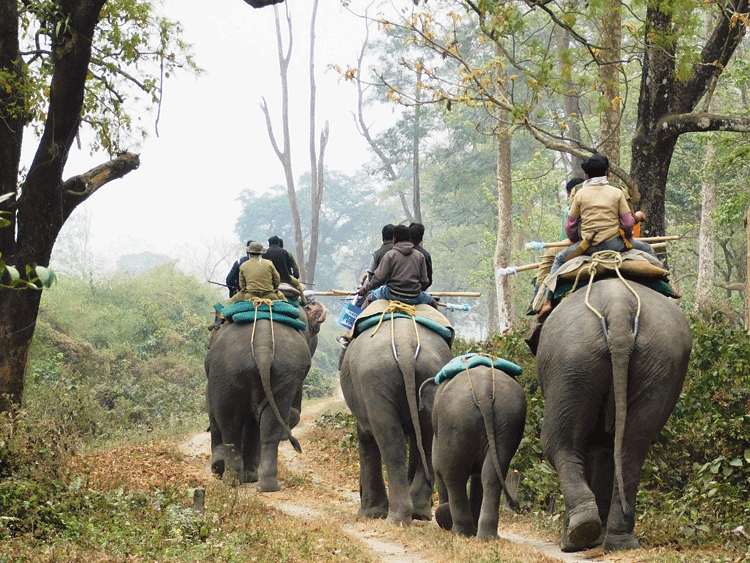The Bengal forest department carried out a “Herculean task” of vaccinating 17 wild rhinos over an area of 10sqkm in Jaldapara National Park a few days ago to prevent an outbreak of a suspected infection.
The foresters also vaccinated 78 pet elephants, maintained by the department for patrolling and safaris of tourists. The trigger behind the scare had been the deaths of five rhinos over a period of 72 hours last week in the park, home to 250 one-horned rhinoceroses.
The Telegraph takes a look at what the department has done during those days.
Preparation
After the deaths of five female rhinos, there was a suspicion that it might be a possible anthrax outbreak.
So, the first part of the job entailed scanning an area of 216sqkm and checking whether any rhino is ill or dead.
Then the most important part of the project involved locating and vaccinating rhinos in Sishamara Forest Beat area, where four carcasses were recovered. The 10sqkm area was also brought under surveillance.
Given the proximity of the animals in the area, the pet elephants used in patrolling also had to be vaccinated.
Operation
Teams of veterinary doctors readied the vaccines and then the actual project on the ground started as they set out on elephant back in search of rhinos.
“Vaccinating a rhino is a Herculean task. Once a rhino is located, it needs to be followed with precocity,” said a forester.
According to him, once a rhino halts at a spot, the dart gun with the vaccine has to be fired with accuracy and after the animal is hit, one has to be sure that it has been vaccinated.
“For this, arrows fitted with clothes soaked in paint have to be shot at the rhino. It required extreme patience and alacrity. The entire work has to be done deftly, or else, the animal might turn away,” said a forester.
To mark the vaccinated rhinos, the department had initially used colour sprinklers and then colour soaked tennis balls. “But these didn’t work and we came up with the idea of using arrows,” he added.
“Just think of a rhino, which weighs around 2,000 kilos or even more and it is charging at you, as you stand on a vehicle or sit on an elephant, with the dart gun in hand.”
The vaccination of the pet elephants, however, was a bit easier.
“This is because the elephants are trained and lay down on instructions of the mahouts. But it was a tedious job of getting all the elephants in place and vaccinate them one after other,” an officer said.
Post vaccination
Teams on elephant back continue to keep vigil on Sishamara, while others move into the forest in vehicles and by foot, spraying chemicals like formalin and lime to sanitise the forest area.
“We will also carry out controlled burning to ensure that the infection does not remain in the grassland. This is yet another preventive measure,” Kumar Vimal, the divisional forest officer of Jaldapara wildlife division said.
Why the exercise
An important tourist destination of the state, the riverine grassland forests of Jaldapara attracts almost one lakh people every year. It is home to leopards, wild dogs, leopard cats, elephants, rhinos, gaurs, sambars, hog deer, barking deer, birds and reptiles.
“The vaccination was taken up to prevent the infection’s spread further among herbivores of the park. Also, hundreds of cattle from nearby villages enter the park for grazing and there was a chance of infection,” Vimal said.

